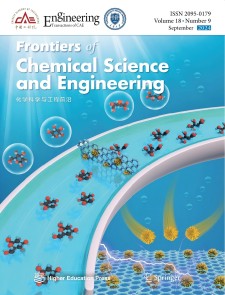Bicontinuous porous membranes with micro-nano composite structure using a facile atomization-assisted nonsolvent induced phase separation method
Abstract
The micro-nano composite structure can endow separation membranes with special surface properties, but it often has the problems of inefficient preparation process and poor structural stability. In this work, a novel atomization-assisted nonsolvent induced phase separation method, which is also highly efficient and very simple, has been developed. By using this method, a bicontinuous porous microfiltration membrane with robust micro-nano composite structure was obtained via commercially available polymers of polyacrylonitrile and polyvinylpyrrolidone. The formation mechanism of the micro-nano composite structure was proposed. The microphase separation of polyacrylonitrile and polyvinylpyrrolidone components during the atomization pretreatment process and the hydrogen bonding between polyacrylonitrile and polyvinylpyrrolidone molecules should have resulted in the nano-protrusions on the membrane skeleton. The membrane exhibits superhydrophilicity in air and superoleophobicity underwater. The membrane can separate both surfactant-free and surfactant-stabilized oil-in-water emulsions with high separation efficiency and permeation flux. With excellent antifouling property and robust microstructure, the membrane can easily be recycled for long-term separation. Furthermore, the scale-up verification from laboratory preparation to continuous production has been achieved. The simple, efficient, cost-effective preparation method and excellent membrane properties indicate the great potential of the developed membranes in practical applications.

 求助内容:
求助内容: 应助结果提醒方式:
应助结果提醒方式:


